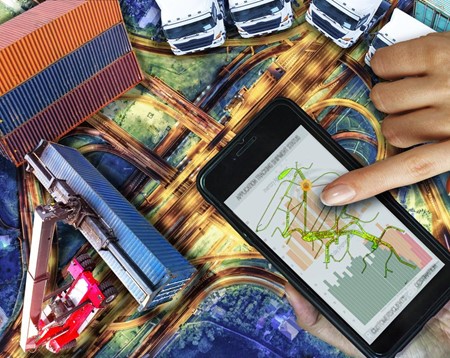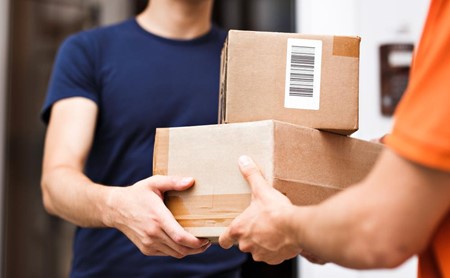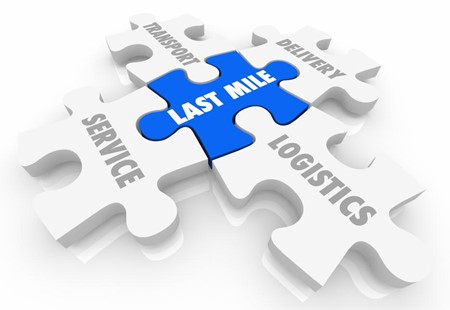A marathon runner might run a great race, but if they fall behind in the final lap, competitors can often overtake them. For companies who are determined to be winners, this analogy sums up the problem of last-mile logistics. Your supply chain might run like a dream until it’s time to get the product to the customer’s door—but if that’s where your chain breaks down, the customer will be just as unhappy.
Last-mile logistics have proved to be a mighty challenge for companies large and small, particularly in the ultra-competitive world of eCommerce. The last mile is where many seemingly small factors start to add up: customers who can’t take a delivery until the next day, inaccessible delivery zones, bad weather and so many more. One study reports that of the $10.6 billion predicted to be spent globally on logistics in 2020, two-fifths will be spent on last-mile delivery.
However, logistics innovators have begun to rise to the challenge, making last-mile delivery more efficient than it’s ever been. How are these innovators achieving these results? Read on to learn about nine technological advances that your business can use to power an efficient last-mile operation.
1. Get information that gives you the most complete picture.
Data-driven decisions are essential for efficient last-mile logistics. To improve delivery times and reduce mistakes, it’s important to know where slowdowns and mistakes are happening in the first place. If your business doesn’t yet have a way to monitor how long each delivery takes, it may be time to invest in one so that you’ll have a performance benchmark.
2. Plan routes more efficiently using route management software.
When it comes to planning an efficient multi-stop route, a computer can often see the connections that a human mind can’t. Numerous route management programs are now available that can help a business plan their logistics efficiently to get their products to the customer on time. Even if you’re a small business and route management isn’t a current need, consider whether it will be necessary to scale your business in the future.
3. Consider alternatives like crowdsourced delivery.
It’s not right for every business, but crowdsourced delivery has become a hot technology for a reason. Particularly for small businesses in urban environments, it can be an efficient and cost-effective way to solve last-mile challenges.
Foodservice businesses have already widely embraced this technology through now-established names like GrubHub and UberEATS, but it’s now expanded far beyond food. Deliv now offers retail delivery and Postmates and UberRUSH will deliver nearly anything. While these services come with their own drawbacks, such as high per-delivery cost and courier shortages, they can be a viable option for many smaller urban businesses.
4. Track and manage individual customers.
Last-mile logistics often demand the use of fine-grain data. If you’re using CRM software, it should provide options for making notes on the needs of specific accounts and customers. Allocating extra time for a warehouse that always has a crowded dock or remembering where to leave a package at a customer’s residence can make all the difference in offering a higher level of customer service.

5. Utilize shipment tracking software.
Offering shipment tracking is one of the most efficient ways to foster customer confidence in your delivery operations. One CX consulting firm’s survey found that 82 percent of customers surveyed said that they wanted retailers to communicate with them proactively at every stage of fulfillment and delivery.
If your last-mile delivery is run through a large carrier like FedEx or UPS, they may already offer tracking options for your customers to use. For businesses that do in-house last-mile delivery, numerous software options are now available to help your customers track their orders.
6. Harness the power of predictive analytics.
When your business is facing the challenges of implementing last-mile solutions at scale, predictive analytics are often an indispensable tool. These analytical tools—often available in enterprise resource planning or logistics software—collect historical data and use it to derive insights about what customers are likely to order and how to allocate logistics resources.
Good predictive analytics can offer insights for every stage of the program, from sourcing shipping containers to allocating inventory between warehouses. As with many trends in logistics, Amazon has set the pace of innovation here, employing systems that ship products to where they’ll be needed before a customer even places an order.
7. Implement driver management technology to help keep your drivers on schedule.
Driver management technology is now standard in the transportation industry. Being able to see where your drivers are and how they manage their routes is a key data source for optimizing performance. Implementing this technology can require significant capital investment since it usually involves outfitting vehicles with GPS devices, but the returns in productivity and efficiency are often considerable.
8. Upgrade your packaging to be more efficient and effective.
Optimizing your packaging can have real and useful effects on last mile logistics performance, both in terms of speed and cargo protection. Using custom shipping boxes can help you improve space efficiency in shipping containers and in delivery vehicles by giving your products the exact box size they need without wasting any space, and high-efficiency packaging solutions can improve breakage protections and help your products get to the customer safely.

9. Reduce or bypass the last mile where possible.
Finally, it’s always worth thinking outside the box and examining options that significantly reduce delivery times or that don’t require it at all. For retailers with brick and mortar locations, BOPIS (buy online, pick-up in-store) programs are popular for their ability to get a customer their order faster without the headache of the last mile. Others have found success in a decentralized model that expands their operations using many smaller warehouses in more locations.
Last-mile logistics mean embracing the art of finishing strong and, to master that art, it’s important to know and use the many new tools available. Which ones are right for your business? That depends on your business—but, with the many new tools available, there’s a good chance you can find one that fits your strategies and goals.
- 9 Ways Technology Can Improve Last-Mile Logistics - September 23, 2021




Comments are closed.